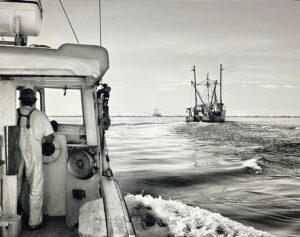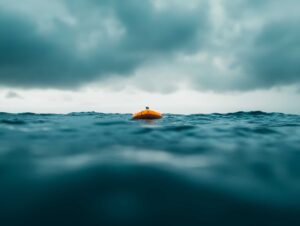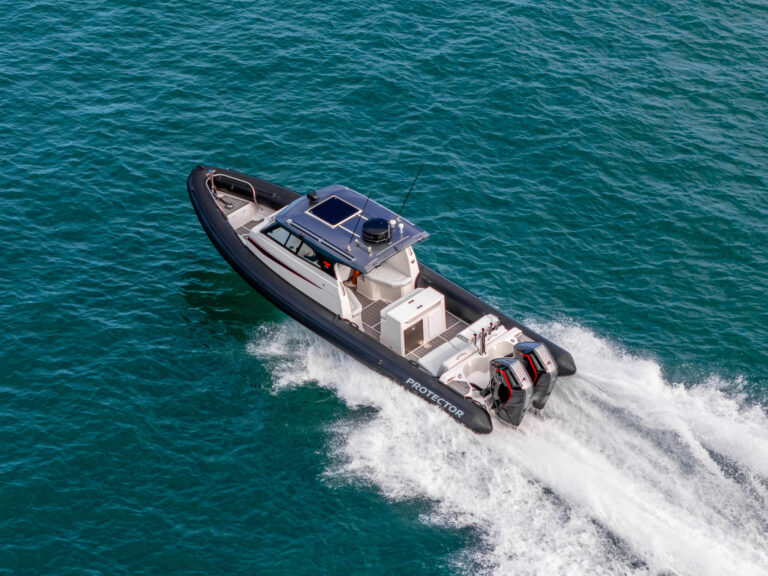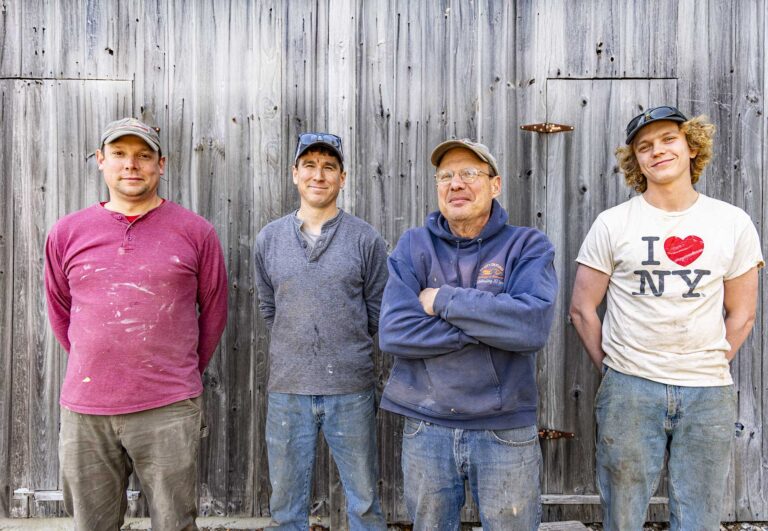
The Chesapeake Bay Maritime Museum is preparing to show the world just how much $30,000 can mean to a whole lot of people.
In January, the Rural Maryland Council awarded more than $30,000 in grant funding to the museum to support its Shipwright Apprentice Program. The museum has been operating the program for more than 20 years and has graduated more than 50 apprentices, but until recently, the lessons were informal. In 2018, the museum took things up a notch by creating a formal, four-year apprentice certification within the guidelines of federal and state regulations. That program just celebrated its second graduate this past winter. The new funding will, among other things, help to pay the stipend that formal apprentices receive going forward.
Practically speaking, though, the grant money will have far more of an impact. One of the things apprentices do is work on projects at the museum’s shipyard. Right now, that work includes building the Maryland Dove, a reproduction of the trading ship that, in 1634, accompanied the first settlers to what is now Maryland. All of the apprentices get time on the Dove, planking, installing cabin soles, learning about rigging and more. That work is done in full public view. Visitors can watch the apprentices on the job. They can ask questions. They can take classes themselves or become “apprentices for a day” to learn some of the skills that the apprentices are demonstrating. In other words, everything the apprentices do helps to build not just a boat, but an entire community of people interested in learning about and preserving the craft of traditional wooden boatbuilding.
“Whether you just want to come and experience traditional boatbuilding for a day or you want to build a career out of it, or you want to get your kids interested in it, they’re all linked to one another, and the backbone is the apprentice program,” says Christian Cabral, vice president of shipyard operations. “As we continue to do our work in the shipyard, the apprenticeship program will grow, and more and more people will be involved.”
Jennifer Kuhn, the museum’s shipyard education programs manager, says all kinds of people take an interest—and often, great pride—in the work that’s being done. Many visitors to the museum’s shipyard are boaters themselves, looking to hone their skills for their own smaller projects back home. “There was a guy that came to a couple of the Maryland Dove workdays. He’s building a 14-foot boat in his garage,” Kuhn says. “Another person came to a class during which we were doing some caulking. He wanted to learn that for a project on his boat. You also have people who are curious, or maybe they’ve built a stitch-and-glue boat, and they got turned on to the idea of building boats.”

Watching the apprentices at work, and being able to ask them questions, helps with all of that. Right now, the museum has space for four apprentices, who receive housing in addition to their stipends. With the recent graduation of Stephen North from the program (he’s now a full-time associate shipwright working on the Dove), there is a slot available. Kuhn says the application process is competitive.
North says he became interested in boating as a kid, while rebuilding a yawl through the Boy Scouts of America Sea Scouts program. He then learned more about wooden boatbuilding at a community college in North Carolina. As part of the apprentice program at the Chesapeake Bay Maritime Museum, he not only advanced his skills, but also got to cruise up and down the bay aboard the Edna E. Lockwood, a historic 54-footer that was used for oyster dredging from 1889 to 1967, and that today is part of the museum’s floating fleet.
“One of the most beneficial parts of the program, I think, is that you actually get to go out on these boats,” North says. “If you haven’t been out on the water, you don’t really know why you’re doing the repairs. But when you get out on the bay and see these boats the way they were intended, you quickly learn the importance of why you make the wood a certain size and use the proper fasteners and techniques.”

Just being a part of creating a vessel with that kind of staying power draws everyday people to the museum’s programs, Kuhn says. Some visitors cruise to the marina on their own boats, tie up for a weekend, take a class during the day, and borrow a couple of bicycles to head into town for dinner at night. She tries to have programs available for people of all age and skill ranges—including beginners—and for people with varying mobility needs who may, for instance, prefer to work on smaller projects in the shop.
No matter what people choose to learn at the museum’s shipyard, she says, it can be a fun little adventure, and it gives boaters a connection to the greater fabric of the Chesapeake Bay’s boating community. Visitors who take part in these programs tend to feel the same type of pride that beats in the hearts of the shipyard’s formal-program apprentices, she says. “When people do something they’ve never really done before, they feel empowered,” she says. “You can see it. They’re smiling. They make friends. The group dynamics are wonderful.”

And, everyone is contributing to the continuation of a craft that has existed for centuries. In a world now filled with metal, composites and machines, the museum’s programs aren’t just intended to construct and preserve wooden boats. They’re also intended to keep the very idea of wooden-boat building alive, by inspiring people of every generation to participate and learn.
“I think it’s a really romantic idea,” Kuhn says. “There’s a lot of sanding and scraping and stuff that’s not the glorious work, but years from now, you can say, ‘I worked on the Dove.’ That’s a big feather in a cap.”
This article was originally published in the April 2022 issue.











